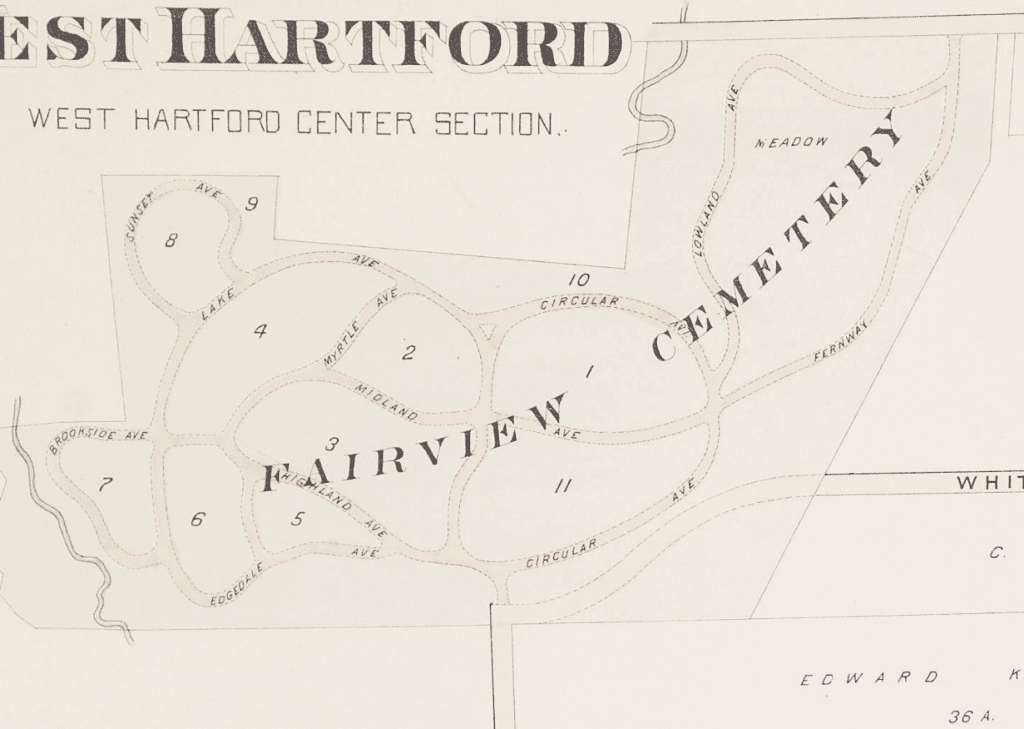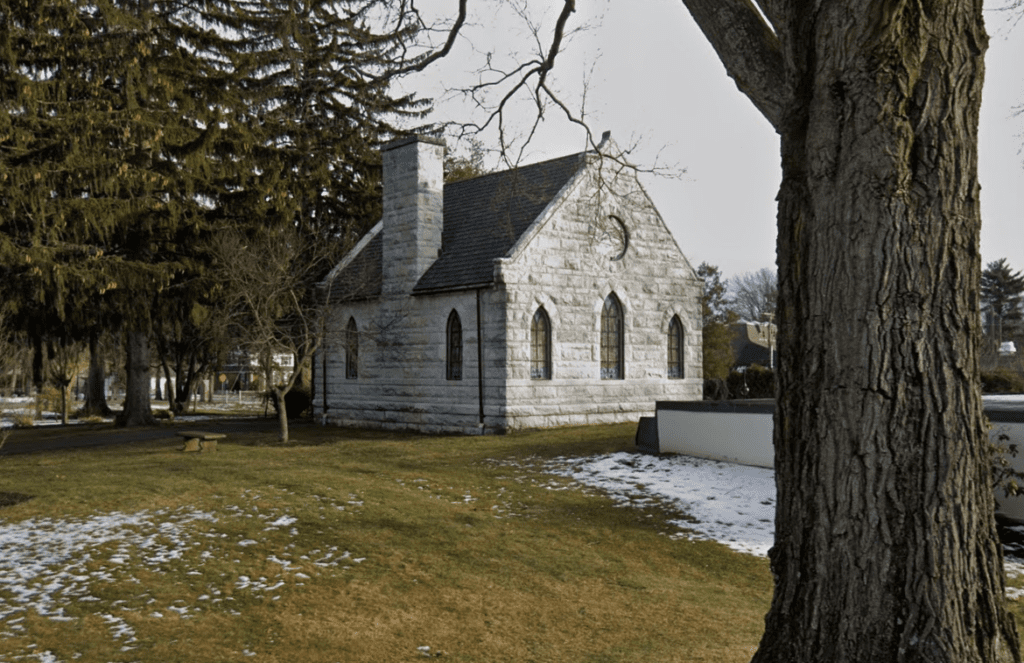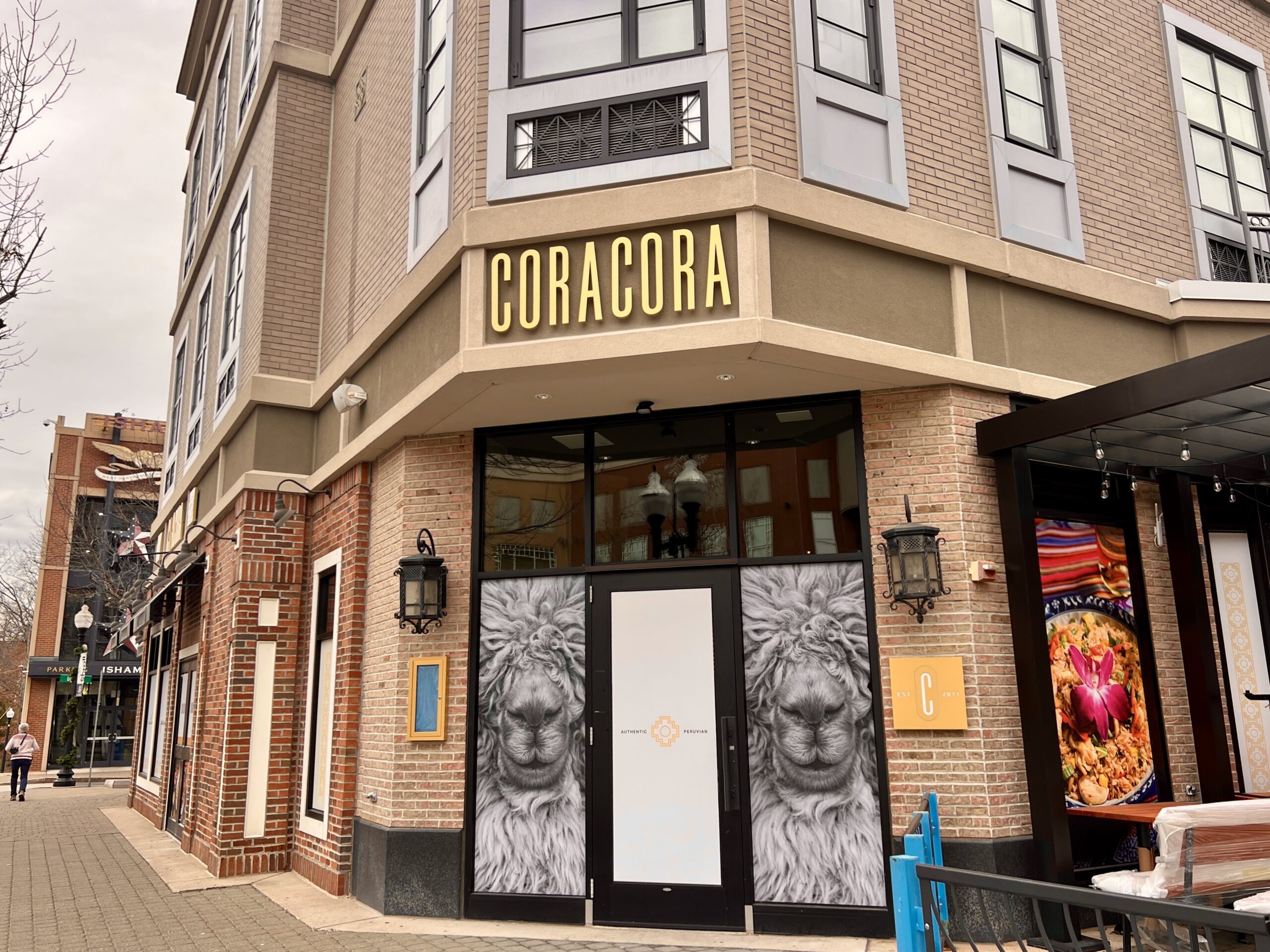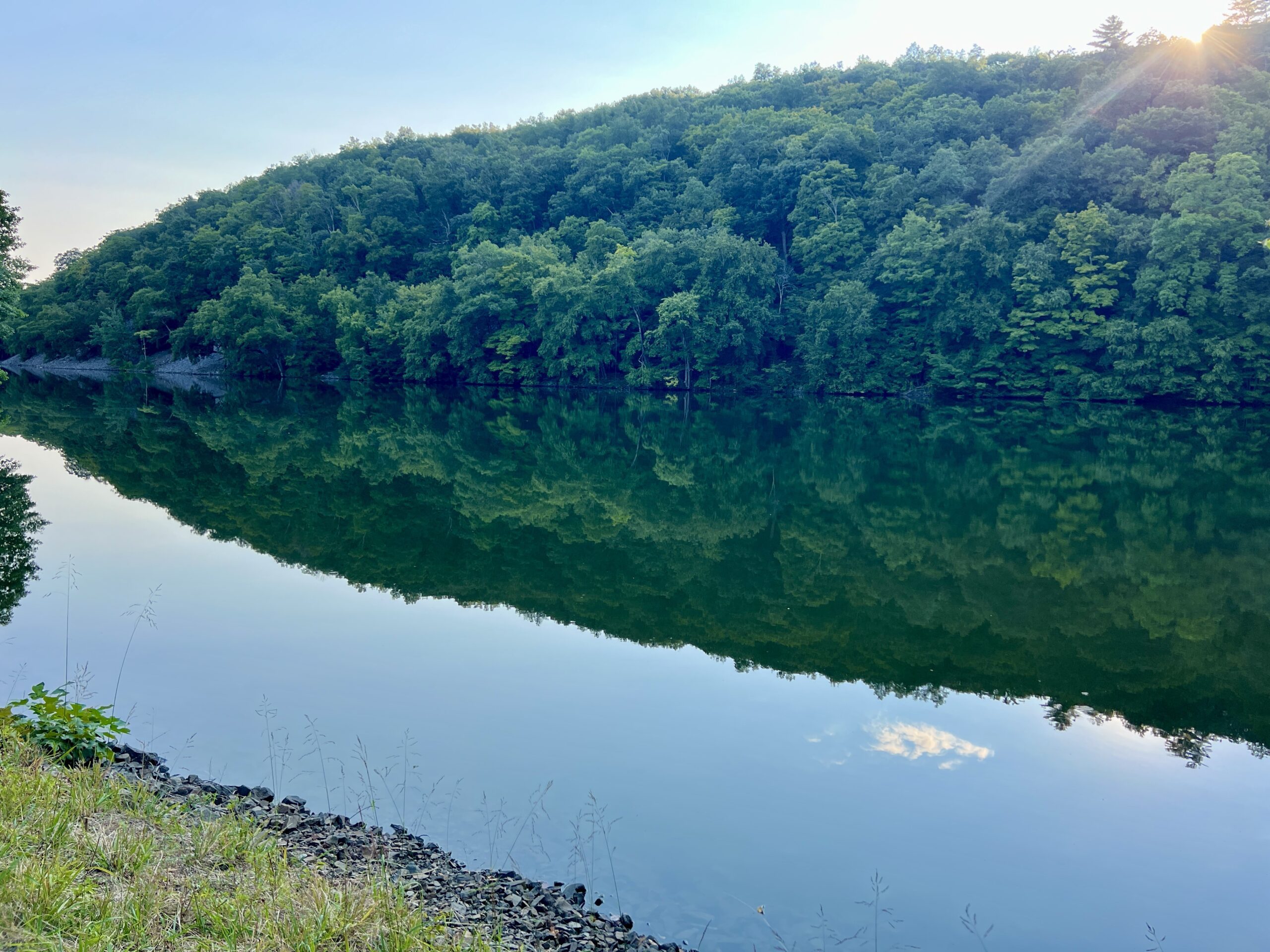From the West Hartford Archives: Fairview Cemetery Vault and Chapel

Audio By Carbonatix

Fairview Cemetery's original receiving vault and chapel. Photo courtesy of Noah Webster House & West Hartford Historical Society
Historian Jeff Murray takes a look into West Hartford’s past to uncover some surprising information, stir up some memories, or reflect on how much life has changed – or hasn’t changed at all. Enjoy this week’s ‘From West Hartford’s Archives’ …
By Jeff Murray
Although it is now nearly 130 years old, Fairview Cemetery is West Hartford’s largest and most recent public cemetery, laid out in 1894. This is a photo of Fairview’s original receiving vault and mortuary chapel, built in 1906.
Older cemeteries exist along North Main Street and Quaker Lane and date their gravestones from the early 1720s to the 1890s, but the growth of the town brought new families (and therefore new demand for land for burials).
In November 1892, the farmhouse and barn of Charles M. Pond (the same Pond whose bequest to the City of Hartford created Elizabeth Park in honor of his wife) burned to the ground. The farmhouse had been rented to a groundskeeper, Fred Fuller, and when in the summer of 1893 the town purchased the western portion of the estate (about 71 acres) from Pond for a new cemetery, Fuller was tasked with staking off the land into individual burial lots and little roads.
For the next year and a half, teams were hard at work under Edward Keeney excavating and landscaping. According to the Hartford Courant, the first sale of a burial lot was transacted in November 1894 by William Very of Hartford. His infant child had been buried at Cedar Hill but removed to Fairview Cemetery that month. It is bittersweet to think of purchasing two burial sites for the same child to support a more special memorial.
The first set of burial lots until 1896 were priced at 15 cents per square foot and numbered a total of 800 originally. A number of families followed the burial of the Very infant in 1894 by removing other family members from the local cemeteries on North Main Street (which is why there are some 1700s and early 1800s graves on site at Fairview).
Traditions at the older cemeteries, like the Arbor Day planting of trees and the decoration of soldiers’ graves for Memorial Day, were carried out at Fairview as well, especially after the Spanish-American War and World War I. Indeed, a single burial lot was furnished for the deceased of the Spanish-American War.

Map of Fairview Cemetery in 1896, just a year and a half after it was laid out
In order to reach this new cemetery, two streets were laid out – Pleasant Street north from Farmington Avenue and Whitman Avenue west from North Main Street. Interestingly, the walls of the Pond farmhouse (the one that had burned in 1892) were still standing by the end of 1898 when the town finally removed them. Landscaping and maintenance were constant under the purview of the cemetery committee.
Investment brought better infrastructure, like a better tool house, better paving and water mains for the roads leading to the cemetery by 1902. Sometimes it was urgency that spurred developments. For example, cemeteries need a place to temporarily hold the dead if they cannot be buried immediately, usually during the winter months when the ground is too frozen to dig. In the winter of 1903-1904, there was a bout of extremely severe winter weather, plenty of snow, and a deep frost. There had been a desire for years among the town that a vault and mortuary chapel be built, covered by a tax increase of 1 or 2 mills, but this particularly rough winter was enough to spur the town to get to work.
This marble mortuary chapel would streamline funeral services, memorials, and other rites. When it was finally built in the spring of 1906, it featured black walnut seating, stained glass windows, and dark red terra cotta tile roofing. The receiving vault at the rear of the chapel allowed the building to serve a double purpose (and certainly saved the town money, which was a big debate at the time…).

Rear of the mortuary chapel at Fairview Cemetery, looking south to Whitman Avenue, Google Street View
The land that Fairview Cemetery sits on was once a sheep farm on rolling hills and groves in the shadow of the mountains to the west and Trout Brook to the north. Over the years, the paths to Fairview Cemetery served as scaffolding for residential development.
Suburban streets south of Fern Street were laid out into a grid just a few years after the cemetery was laid out. Houses were built along Pleasant Street and Whitman Avenue through the 1910s and 1920s. When the system of town government transitioned to a town manager and council in 1919, cemetery management was rolled up into the council-appointed Park, Town Plan, and Cemetery Commission.
As the 1920s growth panned out for West Hartford residents, there was more leisure time and more travel to different parts of the town. The relatively open land just north of the Center along Fern Street was used by children as a swimming hole, which eventually developed into Fern Park.
This entire section of West Hartford owes much of its current layout to the brand new Fairview Cemetery.
Jeff Murray was born and raised in West Hartford and has been involved with the Noah Webster House & West Hartford Historical Society since 2011 when he was a high school student and won the Meyer Prize for his essay on local history. Jeff routinely volunteers as local history researcher uncovering information for numerous museum programs such as the West Hartford House Tour and West Hartford Hauntings. Jeff works as a data analyst at Pratt & Whitney.
Like what you see here? Click here to subscribe to We-Ha’s newsletter so you’ll always be in the know about what’s happening in West Hartford! Click the blue button below to become a supporter of We-Ha.com and our efforts to continue producing quality journalism.



